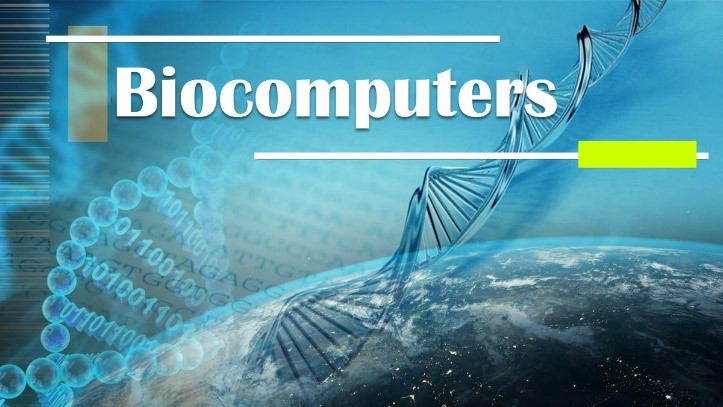Description

Disclaimer: Copyright infringement not intended.
Context
- Scientists at Johns Hopkins University (JHU) recently outlined a plan for a potentially revolutionary new area of research called “organoid intelligence”, which aims to create “biocomputers”:
What is the premise of this technology?
- Understanding how the human brain works has been a difficult challenge.
- Traditionally, researchers have used rat brains to investigate various human neurological disorders. While rats provide a simpler and more accessible system to study the brain, there are several differences in structure and function and obvious differences in the cognitive capacities of rodents and humans.
- In a quest to develop systems that are more relevant to humans, scientists are building3D cultures of brain tissue in the lab, also called brain organoids. These “mini-brains” (with a size of up to 4 mm) are built using human stem cells and capture many structural and functional features of a developing human brain. Researchers are now using them to study human brain development and test drugs to see how they respond.
- However, the human brain also requires various sensory inputs (touch, smell, vision, etc.) to develop into the complex organ it is, and brain organoids developed in the lab aren’t sophisticated enough. The organoids currently also don’t have blood circulation, which limits how they can grow.
.jpeg)
Aren’t there other ways to study the human brain?
- Recently, scientists transplantedthese human brain organoid cultures into rat brains, where they formed connections with the rat brain, which in turn provided circulating blood. Since the organoids had been transplanted to the visual system, when the scientists showed the experimental rats a light flash, the human neurons were activated, too, indicating that the human brain organoids were also functionally active.
- Scientists have touted such a system as a way to study brain diseases in a human context. However, human brain organoids are still nested in the rat-brain microenvironment, including the non-neuronal cells that we know play a critical role in some neurological diseases. The effects of drugs in this model will also have to be interpreted through various behavioural tests in rats, which could be insufficiently representative. So we need to address the limitations of lab-grown organoids and develop a more human-relevant system.
What is the new ‘bio-computer’?
- The JHU researchers’ scheme will combine brain organoids with modern computing methods to create “bio-computers”.
- They have announced plans to couple the organoids with machine learning by growing the organoids inside flexible structures affixed with multiple electrodes (similar to the ones used to take EEG readings from the brain).
- These structures will be able to record the firing patterns of the neurons and also deliver electrical stimuli, to mimic sensory stimuli. The response pattern of the neurons and their effect on human behaviour or biology will then be analysed by machine-learning techniques.
- Recently, scientists were able to grow human neurons on top of a microelectrode array that could both record and stimulate these neurons. Using positive or negative electric feedback from the sensors, they were able to train the neurons to generate a pattern of electrical activity that would be generated if the neurons were playing table tennis.
What are the opportunities for ‘bio-computers’?
- While human brains are slower than computers at, say, simple arithmetic, they outshine machines at processing complex information.
- Brain organoids can also be developed using stem cells from individuals with neurodegenerative diseases or cognitive disorders. Comparing the data on brain structure, connections, and signalling between ‘healthy’ and ‘patient-derived’ organoids can reveal the biological basis of human cognition, learning, and memory.
- They could also help decode the pathology of and drug development for devastating neurodevelopmental and degenerative diseases such as Parkinson’s diseaseand microcephaly.

Are ‘bio-computers’ ready for commercial use?
- Currently, brain organoids have a diameter of less than 1 mm and have fewer than 100,000 cells (both on average), which make it roughly three-millionth the size of an actual human brain. So scaling up the brain organoid is key to improving its computing capacity – as will incorporating non-neuronal cells involved in biological learning.
- Second, researchers will also have to develop microfluidic systems to transport oxygen and nutrients, and remove waste products.
- These hybrid systems will generate very large amounts of data (i.e. of neural recordings from each neuron and connection), which researchers will need to store and analyse using ‘Big Data’ infrastructure. They will also need to develop and use advanced analytical techniques (with help from machines) to correlate the structural and functional changes in the brain organoids to the various output variables.
Closing Remarks
- The challenge is now to establish long-term memory. Applying this to patient cell-derived brain organoids, like autism and Alzheimer donors, is already on the way. We might see benefits for drug development in this decade.
- There is also a proposal to have an ethics team to parallelly identify, discuss, and analyse ethical issues as they arise in the course of this work.
|
PRACTICE QUESTION
Q) What do you understand by the concept of Bio Computers? Describe the premise of this technology in detail.
|

https://www.news9live.com/science/results-of-dart-planetary-defence-test-to-deflect-asteroid-published-au941-2066747














